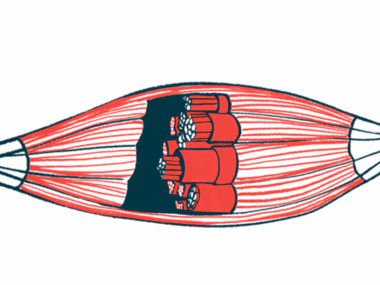At-home Gait Monitor May Track Progression, Treatment Response
Gait speed declined twice as fast in study patients as it did in healthy people: study
Written by |

Continuously monitoring the gait of Parkinson’s disease patients in their homes using a wireless device is feasible and may provide more sensitive measurements of disease progression and treatment response, according to a new study.
The device, which monitors fluctuations in motor function by tracking gait speed, may improve disease monitoring and management in people with Parkinson’s.
Previous research from the same team led to the development of a device that detects the presence and severity of Parkinson’s disease through patients’ breathing patterns.
“Our study shows the feasibility of continuous, objective, sensitive, and passive assessment of [Parkinson’s disease] at home and hence has the potential of improving clinical care and drug clinical trials,” the researchers wrote.
The study, “Monitoring gait at home with radio waves in Parkinson’s disease: A marker of severity, progression, and medication response,” was published in Science Translational Medicine.
A key challenge in Parkinson’s disease is tracking disease severity and progression and monitoring responses to treatment. Existing methods require visiting the clinic frequently and are semi-subjective.
The Movement Disorder Society-Unified Parkinson’s Disease Rating Scale (MDS-UPDRS) is widely used for evaluating motor and nonmotor disease symptoms. However, it’s applied in the clinic infrequently and can be affected by the patient’s condition on that particular day and the subjectivity of both the patient and evaluator.
To tackle the need for objective and accurate assessments, researchers led by a team at the Massachusetts Institute of Technology (MIT), developed a radio device similar to a home Wi-Fi router to continuously monitor gait speed.
The device acts as a low-power radar and works by sending radio signals (1,000 times lower power than Wi-Fi) and collecting their reflection from the environment and people.
Tracking gait speed
The study included 50 participants, 34 with Parkinson’s disease (mean age 69.4, 26% women) and 16 age-matched people without Parkinson’s (mean age 66.4, 50% women) who served as controls. A first group of 20 patients were monitored for two months, while the remaining enrolled in an ongoing two-year observational study. At the time of the analysis, patients in this second group had been monitored for up to one year.
By using advanced signal processing, the researchers extracted walking movements and trajectories at home. These indicated participants with Parkinson’s disease walked at home at a speed 23% lower than those without the disease (0.7 m/s vs. 0.91 m/s).
Measurements of gait speed in patients correlated with assessments of disease severity, disease progression, and medication response.
The team observed that gait speed strongly correlated with scores on the MDS-UPDRS scale, the gold standard for monitoring disease severity. “This result demonstrates that in-home passive gait speed measurements provide a clinically meaningful assessment of PD severity,” the researchers wrote.
By monitoring participants for up to a year, the researchers showed that gait speed steadily declined as participants got older. It declined twice as fast in Parkinson’s patients (by a rate of 0.030 m/s per year) compared with those without the disease (0.014 m/s per year), however This significant reduction was not captured in MDS-UPDRS assessments, as patients did not significantly worsen on those scores.
The vast majority (91%) of Parkinson’s patients enrolled in the study were receiving levodopa for symptoms, such as rigidity and slowness of movements. The response to this therapy is usually robust at first, but patients tend to develop motor fluctuations as the disease progresses, with periods of good medication effect (ON time) and periods of emergent Parkinson’s symptoms (OFF time), due to a reduction in the duration of its benefits.
Patients are normally asked to keep a diary wherein they report the hour they take their medication and whether they are in an ON or OFF state every 30 minutes. But this is a burden on those who may have trouble recalling their states at certain times and may not adhere to the requirement.
However, by comparing the variation in gait speed, the monitor was able to passively capture medication response and motor fluctuations in patients, suggesting it could offer a better way to keep track of treatment effects.
The registration of gait speed trajectory was also able to detect changes leading to a major medical event. For example, one participant with Parkinson’s was hospitalized due to atrial fibrillation and coronary heart disease. The patient had a decline in gait speed starting six days before that hospitalization which reached its lowest level on the day of hospitalization.
“Passive gait monitoring might help in managing the overall health of patients with [Parkinson’s disease] and can provide context for some changes in their motor symptoms,” the researchers concluded, adding “the approach described here demonstrates the feasibility of assessing individual patients in their natural living environments to obtain objective, detailed, and clinically meaningful measurements of their disease.”
This new device might also be useful to study other diseases associated with gait and motor dysfunction, such as Huntington’s disease and multiple sclerosis.






